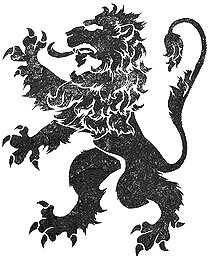Macro Photography & Using the Micro-Nikkor 105mm
One of the most fascinating things about practicing photography is how there are so many disciplines within the practice thereof. From freezing the motion of a soccer player mid-kick to understanding the subtleties of low light and how to manipulate it just right to capture an evening portrait, there are many different aspects to this craft. Each aspect requiring its own specialization in order to produce quality work and macro photography is no different.
I’ll start by saying that depth of field reigns supreme here, plain and simple. While important in every aspect of photography it is especially of great importance here. A rushed aperture selection quickly becomes apparent when a half out of focus subject is staring back at you on the LCD. And with the high 1-to-1 reproduction ratio that a macro lens affords, any miscalculation in this regard is immediately apparent. When delving into the world of macro one must toss the rule book out on any pre-existing notions regarding their understanding of depth of field. A tack sharp f/8 on a 35mm 1.8G is rendered embarrassingly soft on the 105mm micro-nikkor. It’s all about the extremely close focusing distance and jaw dropping magnification ratio of a macro lens. They both work in concert to isolate the subject and produce edge to edge sharpness within the frame (provided there’s enough depth of field to get the job done).
With all that said stabilization is the name of the game and I would whole-heartedly recommend a sturdy tripod solution and shutter release cable or use of your camera’s remote timer. I use this Manfrotto Carbon linked here along with an inexpensive MC-30a and have had stellar results. Now before just heading out with your macro lens (or even screw on magnifiers) you need to understand what is at play. What happens with the macro lens is that the subject is isolated to such a high degree that the available light to make a proper exposure is severely impacted which in turn causes either you or the automatic program mode you are in to compensate. Assuming you are in aperture priority mode (which is what I prefer) even on an ideal day full of bright sunshine your shutter speeds can routinely fall to sub 1/125’th or conversely ISO’s can skyrocket and produce unacceptable grain and noise. And under the scrutiny of the high magnification ratio the slightest movment of an insects wing or flower pedal will trash the image. Hence the tripod-ideally one with an articulating arm such as the one linked are ideal for this photographic endeavor. Now that you know the why, here’s the how; my own personal workflow is as follows.
1) Identify and isolate subject (i.e. flower, insect, or pattern).
2) Set up tripod and adjust accordingly to get angle right.
3) Attach remote trigger and to camera and camera to tripod ball head.
4) In aperture priority dial in appropriate f stop. This will depend on how much depth of field you feel you need in the specific image. Know that things work in order of magnitudes here though. As mentioned previously, an f/11 on a macro lens is very different than an f/11 on a 50mm prime. If the subject is not exactly parallel to the focal plane and there is some depth of field to cover don’t be surprised if you have to stop down to f/22 or higher.
5) In this modality of photography live view with an articulating screen such as on the D850 or 500 is your trusty ally in producing a creative exposure. Often time you are in precarious positions down low to the ground feeling every bit your age when trying to capture these types of scenes and getting your eye to a viewfinder would be simply impossible.
6) Now the all-important act of focusing can be done a few ways. Some rely solely on autofocus, some prefer to always manual focus (the focus ring on a macro lens isn’t double the size of other lenses for no reason). Personally I do a combination of the both depending on the scene and what I’m doing. One method that I find to be quite effective on my d500 is to set the center button on the multi-selector to zoom in 100% and then use the very large and accurate manual focus ring to quickly dial it in perfect, then zoom back out using the same center button and trigger the shutter via the MC-30.
I have found the above method to be highly accurate in producing eye popping images that show a world we just do not see in our busy day-to-day lives. That is definitely one of the coolest things about macro work; you and the others you share your work with get to see things in a way that wouldn’t be possible without this gear, knowledge and abundent supply of patience. I hope this article and my methodology helps in your own pursuits into the micro.
-A.S










